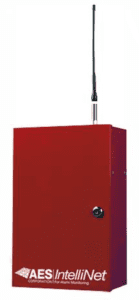Currently, five states require CO detection in their schools (CA, CT, MD, SC, and UT). In fairness, it is possible that local ordinances exist at the county and district levels in other states. And many schools in these and other states, I’m sure, have been proactive in installing detection even though it is not a requirement. This is commendable! Interestingly, a spokesperson for a San Antonio school district was recently quoted as saying that, unlike homes, schools do not need CO detection because windows and doors are often left open and provide adequate ventilation; and that what happened in Dallas was an anomaly. Parents of students in Rochester, Colorado Springs, and St. Louis might disagree.
By all accounts, parents in Dallas have raised the issue of CO detection and it sounds like a local group even donated alarms to the school. This is a fantastic start. But here’s what people need to know: single-station CO alarms, such as the ones you and I buy at the hardware store for our home, aren’t really meant for installation in a school. True, those devices are better than having NO protection at all, but a higher level of protection is a CO detection system that connects to a supervised monitoring station. This type of system is capable of alerting teachers in every classroom or other area of possible CO exposure before CO concentrations reach a dangerous level. Administration would be notified as well, and with the precise location of the detector closest to the source. This feature is particularly helpful since boilers and furnaces are typically kept in rooms that are unoccupied and locked, which reduces the likelihood that someone will hear a CO alarm activation coming from inside the room.
While installation standards do not require a detector in each classroom—only in those adjacent or connected via ductwork to a room with a CO source—proper installation requires extensive planning and effort, which is why NEMA encourages state legislators to provide support, instead of leaving this on the shoulders of local and school officials. School-aged children, as we all know, are not just little adults. Their bodies are much more susceptible to CO exposure and can sustain lasting damage even before an adult feels any symptoms at all. So why risk a tragedy when the steps are so clear to prevent it? It’s not rocket science.
Starting in 2019, Rhode Island now requires Carbon Monoxide detection systems in all RI Schools. Contact AAA Alarms and Fire Protection for a free estimate.




